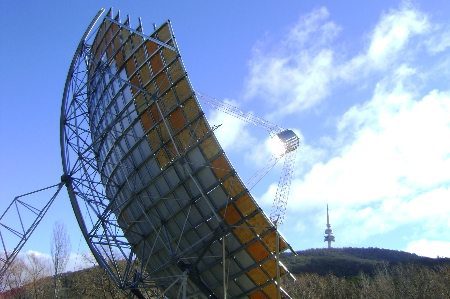Whatever anyone thinks of the technology – and no one will really know until it is deployed and operating at a commercial scale – it is clear that the Solar Oasis consortium behind the 40MW “big dish” solar thermal plant planned for Whyalla are taking an innovative approach to financing and to the energy markets in general. And energy retailers and aspiring solar developers should probably take note.
RenewEconomy caught up with Alex Braisier, the managing director of Solar Oasis, by phone on Wednesday while he was in China, where he is negotiating supply and financing deals for the project. That was our first takeaway from the chat: the $230 million project will not be financed by Australian institutions, as had been envisaged originally, even though an in-principle arrangement had been made with ANZ. Braisier says Australian institutions are too inflexible and narrow in approach.
Instead, Braisier will source equity partners and debt finance mostly from China, possibly from suppliers and other interested parties. “Working with vending project financing arrangements in China is more imaginative than going through motions with an investment bank in Australia,” he says.
(This is not surprising. The fact is that Australian institutions have no experience with such technologies and no reference points. International banks are expected to carry much of the load, and the inspiration, for the solar flagships projects. As this article points out, however, the loan guarantee program in the US has helped financiers get comfortable with the technology and bring down the cost of financing. And check out this article on Forbes, about how investors are making big money from renewables. There are lessons here for the Clean Energy Finance Corp.)
The relationship with Chinese partners and suppliers has grown since Braisier first formed a partnership with Chinese-based solar PV manufacturer SunGen, which is linked with an energy retailer in Braisier’s stable, Sanctuary Energy, supplies its PV modules (at zero upfront cost) and has taken a 26 per cent stake.
Sanctuary is a specialist in green energy retailing, and has some 20,000 customers, mostly with rooftop PV of between 1.5kW to 10kW, and solar hot water systems, with an aggregate capacity of around 30MW. It is small and also nimble: Braisier and his partners are former energy traders, and have developed a solid business playing the market, hedging with caps and derivatives, and using the natural advantage of solar that produces energy in the shoulder and high peaking periods.
This leads us to the next interesting point: the proposed PPA for the Whyalla project, which will feature 330 “big dishes” first developed by ANU and then taken up by Wizard Power. (It is solar thermal with a design change, instead of parabolic troughs or flat mirrors, or solar towers, these dishes can generate temperatures of 2000°C – more than you need unless you are trying to crack hydrogen or turn coal into liquids. So around 600°C will do for Whyalla).
Anyway, Braisier sees the solar dishes as “peaking power,” and he will treat the plant as such. He shakes his head (I presume, it was over the phone) at the reported attempts by the Solar Dawn consortium to strike a PPA of around $200/MWh, in which they were unsuccessful. Why treat solar thermal like a coal-fired power station? he asks. It should be treated like a hydro or gas-fired plant, none of which are ever built with PPAs in hand. They simply play the market and sell into the peaks, when prices jump.
“It (the PPA) will be a derivative product – it’s a peaking plant,” Braisier says. “ “It will sells caps and derivative product to help retailers manage risk. That’s what solar thermal will do.” And given that South Australia has highly volatile prices, and its big peaks coincide with hot sunny days, Braisier can be certain that the Big Dish array will be producing energy when it is most needed, and most profitable. The Solar Oasis offtake agreement will be done through Sanctuary Energy.
“I think we have a different view of the market, we don’t have 100 per cent hedges, and we can take an innovative approach,” he says. “You don’t bank a hydro plant in Australia, or even a gas plant – they are not positioned in market as base-load plants. To suggest that a solar thermal behaves and looks like a coal-fired plant is ridiculous.”
Braisier says the consortium is not planning storage, but may consider adding a small gas-boosted generator to help in firming and dispatchability into the peaks, which he says would improve the project’s IRR. It is also talking, with SunGen, about the possibility of installing a 5MW solar PV installation.
Braisier’s company is currently working with SunGen to construct several solar PV installations of between 1MW and 10MW in the Philippines, replacing diesel, which is costing up to $600/MWh or more. He says PV plants of that size can be installed for around $200/MWh.
Braisier expects the nominated $230 million cost of the project will fall too. Since the tender was first accepted in 2009, the market has changed dramatically, and the price of power blocks, for instance, was down by around 30 per cent. “Vendors are falling over themselves to provide vendor financing,” he says. “We expect a significant reduction in costs.”
Now that the funding deed has been signed, Solar Oasis will work on final design, permitting, and arranging grid connection. Construction is expected to start in May next year, with the project completed before the end of 2015. It will be interesting to see which project provides electricity to the grid first – Solar Oasis, or the 250MW Solar Dawn project in Queensland.






